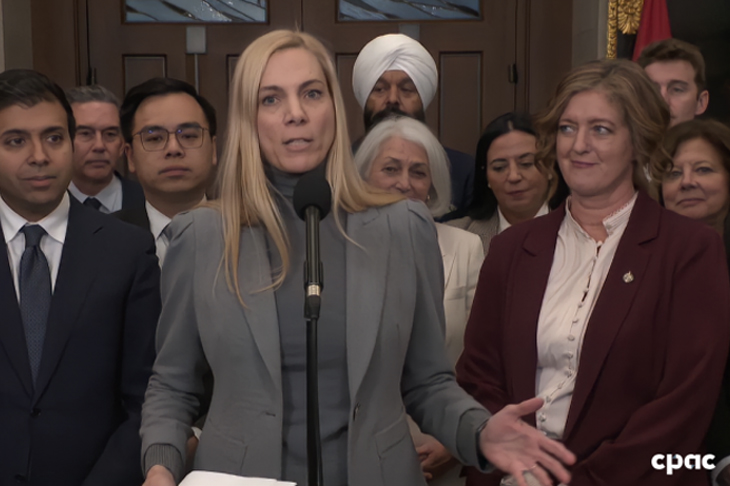Executive oversight committee created to deal with ongoing conflict
TORONTO – Rogers Communications reported its third quarter financial results this morning as the company attempts to put its house back in order after reports made an ongoing power struggle public.
Overall, for the quarter ending Sept. 30, Rogers reported adjusted EBITDA (earnings before interest, taxes, depreciation and amortization) was down 2% to $1.6 billion from Q3 2020 and net income was down 4% to $490 million. Revenue was virtually unchanged from Q3 2020, at $3.6 billion.
Wireless performed well during Q3.
Rogers reported 175,000 wireless postpaid net subscriber additions, “our best result in 13 years,” a press release reads. The company also reported a postpaid wireless churn of 0.95%, its “best third-quarter churn result ever.”
Wireless revenue dropped 1% to $2.2 billion from Q3 2020 while adjusted EBITDA was up 2% to $1.1 billion.
“Wireless service revenue increased by 3% this quarter, mainly as a result of a larger postpaid subscriber base and higher roaming revenue, as global travel restrictions were generally less strict than last year at the onset of Covid-19,” according to the press release.
“Wireless equipment revenue decreased as a result of lower device upgrades by existing subscribers and fewer devices purchased by new subscribers.”
Issues with Apple and Samsung inventory due to global chip shortages factors into this.
“I think that did dampen some upgrade activity and renewal activity within our base and probably caused the mix to skew a little more heavily towards bring-your-own-device as people… decided to stick with the device that they had while they waited for availability on the phone that they really wanted to get,” Rogers president of wireless Dave Fuller said during a conference call with analysts this morning.
This will likely continue into Q4 and probably into Q1, Fuller said.
Cable revenue was up 3% to $1 billion from Q3 2020, and cable adjusted EBITDA was up 2% to $516 million. This was “primarily as a result of higher service revenue,” the press release says.
Media returned to a positive adjusted EBITDA this quarter. In Q2, Rogers reported adjusted EBITDA for media was negative $75 million. In Q3, its adjusted EBITDA was reported to be $33 million. However, that is down from Q3 2020 by 63%.
“Media adjusted EBITDA decreased by 63%, or $56 million this quarter, primarily due to higher Toronto Blue Jays player payroll and lower Media revenue… partially offset by lower sports programming and production costs associated with the timing of the NHL season last year.”
Media revenue was also down this quarter compared to Q3 2020 by 3% to $473 million, “primarily as a result of the NHL and NBA completing their seasons late in the third quarter last year due to Covid-19, when traditionally they conclude in the second quarter, partially offset by higher Toronto Blue Jays game day revenue as Covid-19 restrictions eased and partial fan attendance was permitted,” the press release says.
Executive oversight committee and Rogers’ leadership
Rogers’s Q3 results were released at a tumultuous time for the company. Earlier this month, the Globe and Mail made public “a high-level power struggle” at the company, in which chairman Edward Rogers attempted to replace CEO Joe Natale with Tony Staffieri, who at the time was the company’s CFO. Bloomberg later reported the chairman wanted to remove nine senior executives.
The plan was opposed by Melinda Rogers-Hixon, deputy chair of the company and by most of the board and the Rogers family.
Now, Rogers has formed an executive oversight committee.
According to the company’s Q3 management discussion and analysis (MD&A), during the quarter, the Rogers board “formed an Executive Oversight Committee comprised of John H. Clappison, John A. MacDonald, and Melinda M. Rogers-Hixon.”
“The executive oversight committee was created to advise and assist the chair and me, the CEO, in carrying out our respective duties and to establish clear protocols for interactions between the chair and members of management,” Natale said to analysists during this morning’s conference call.
“The board has also resolved to undertake a comprehensive corporate governance review, which boards do from time to time.”
According to the MD&A, these measures were taken to “further strengthen the company’s corporate governance practices.”
During the conference call, Natale emphasized he has the support of the Rogers board.
“Let me be unequivocal in my commentary,” he said. “I got strong, unequivocal support from the board to direct the strategy of the company that has been approved over the last many strategic sessions with the board, to keep driving the operational initiatives that we’ve been talking about over the last many quarters that continue to drive the improvements and momentum that you are seeing and to support the approach around the Shaw transaction.”
He added: “I’m feeling as comfortable as I have been in the past with the Shaw transaction.”
Natale also said he is working collaboratively with every board member and feels good about recent discussions.
“I feel supported, and rest assured the team, the entire executive team is focused on two things: one, running the business to keep driving performance, and two, landing the Shaw transaction and the synergies and integration efforts that stand behind it.”









